Euryopis Spiders, Solenopsis xyloni (Southern Fire Ants) and Native Fire Ants
Euryopis spiders preying upon native Fire Ants in the Estrella Mountains, Arizona
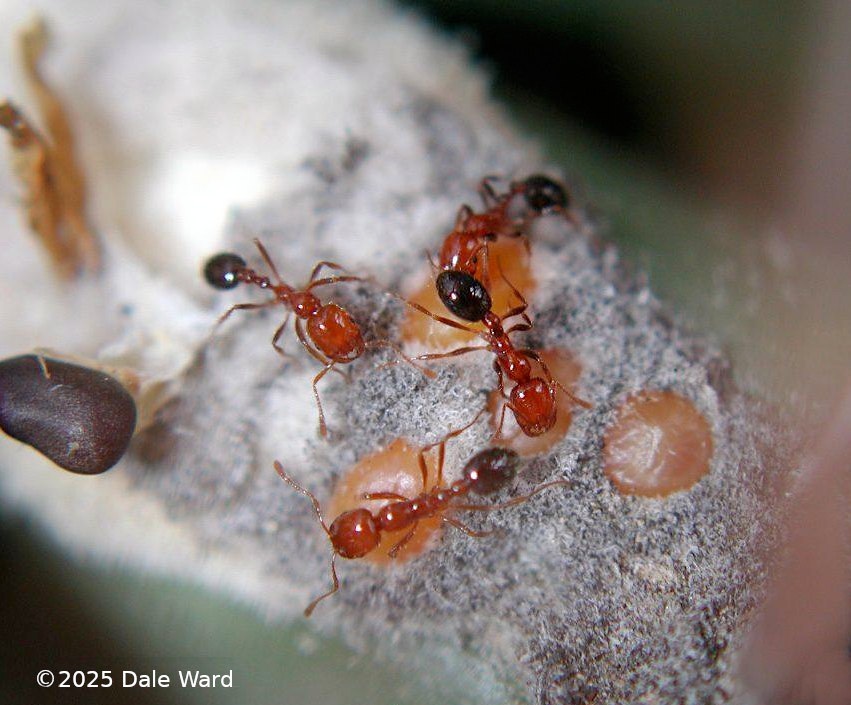 _Solenopsis xyloni_ workers on Barrel Cactus extrafloral nectaries
_Solenopsis xyloni_ workers on Barrel Cactus extrafloral nectaries
On March 23 of 2003, slightly more than a year after my previous encounter with Euryopis spiders, I was anting in the Estrella Mountains, just to the southwest of Phoenix, Arizona. I was watching some Solenopsis xyloni (Southern Fire Ants) on a Barrel Cactus. The ants were busily eating nectar secreted by the Barrel Cactus’ extrafloral nectaries (see above image). These extrafloral nectaries are glandular patches that secrete sugary liquid. Finding ants at extrafloral nectaries is always a treat because the ants slow down to eat the sugars, making it much easier to take photos of them.
Looking at the cactus spines, I started noticing clusters of dead Solenopsis xyloni workers, hanging suspended in the air.
Hmm, I thought. I had seen this before at South Mountain. I’ll bet that Euryopis spiders are behind this.
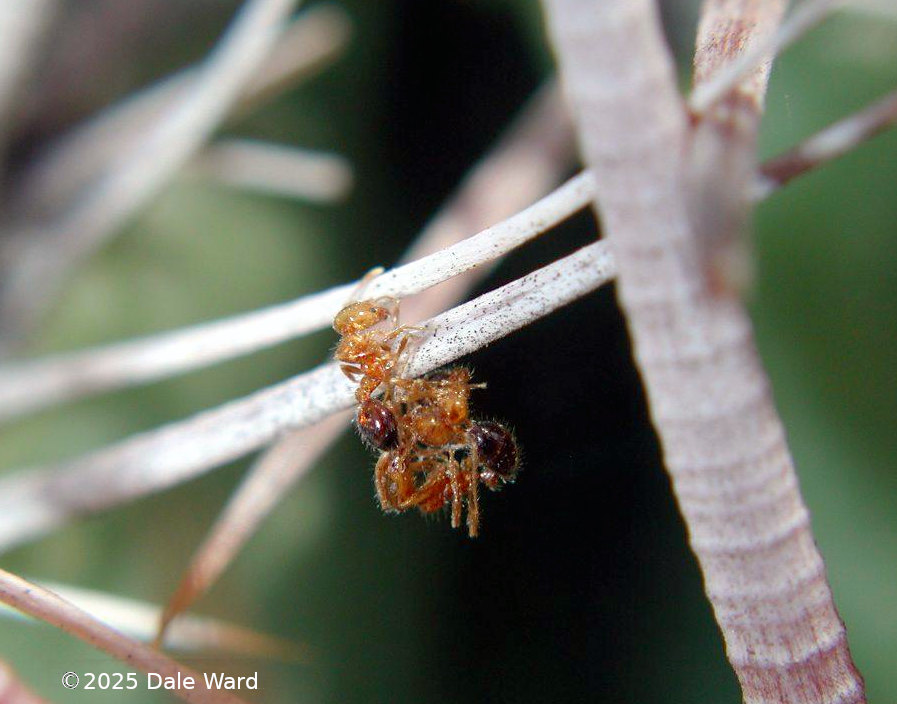 Cluster of dead _Solenopsis xyloni_ on Barrel Cactus spine
Cluster of dead _Solenopsis xyloni_ on Barrel Cactus spine
I found three or four different clusters of the Solenopsis hanging on spines.
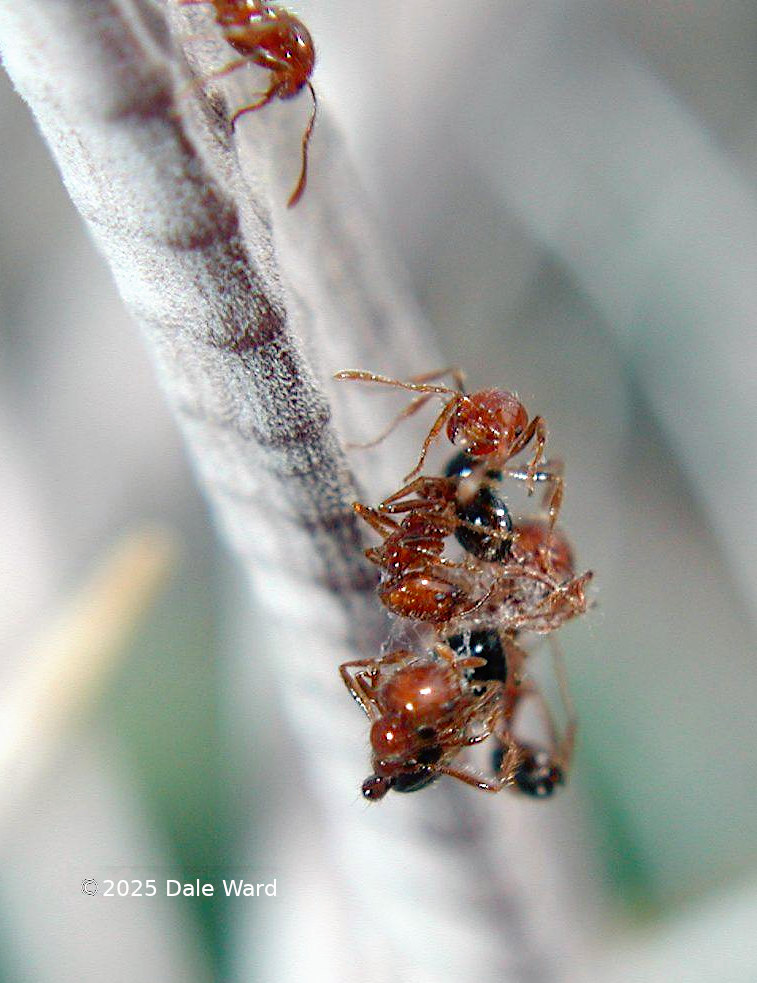 Living _Solenopsis xyloni_ worker examining a cluster of dead workers.
Living _Solenopsis xyloni_ worker examining a cluster of dead workers.
I couldn’t find the spider, though. Hmm. The last time I’d seen something like this was with a different, larger ant - Veromessor pergandei. And the spiders were on the ground. Maybe this wasn’t Euryopis…
Then, finally, I found a tiny spider that I strongly suspect is Euryopis. It was on one of the clusters of dead Solenopsis xyloni.
The tiny spider crawled over the dead Solenopsis for a minute or so, then went and sat on the cactus spine. I watched it on the cactus spine for a few more minutes. It had its legs drawn in close to its body as it waited.
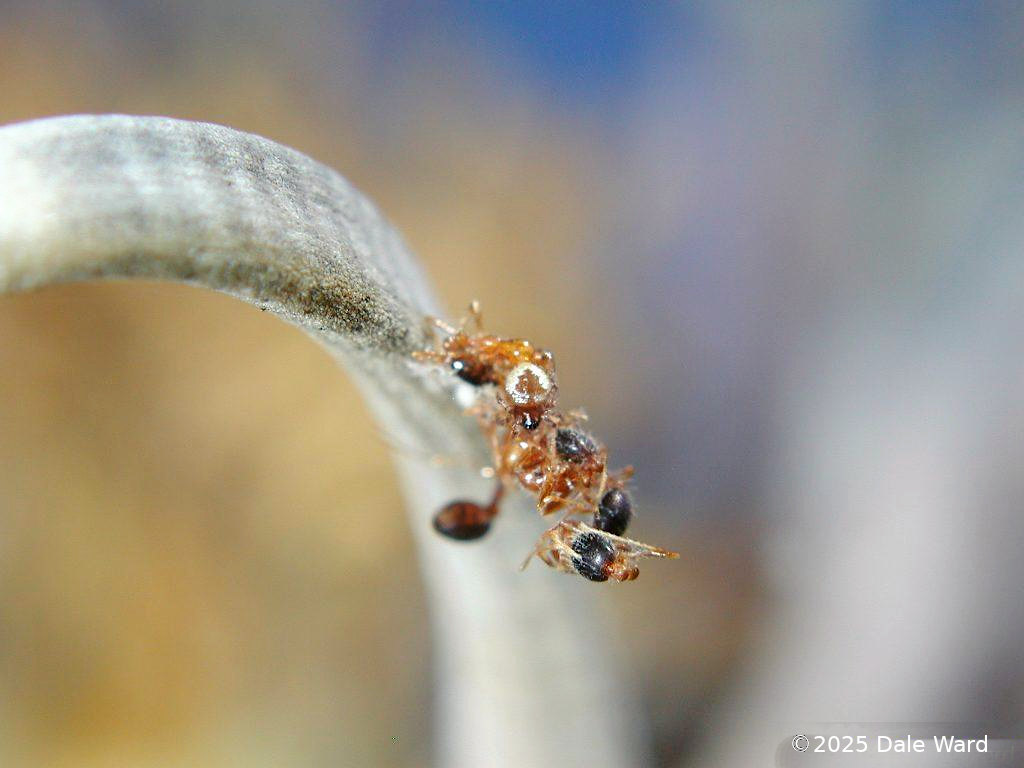 A small _Euryopis_ spider crawling over a cluster of dead _Solenopsis xyloni_, on a barrel cactus spine
A small _Euryopis_ spider crawling over a cluster of dead _Solenopsis xyloni_, on a barrel cactus spine
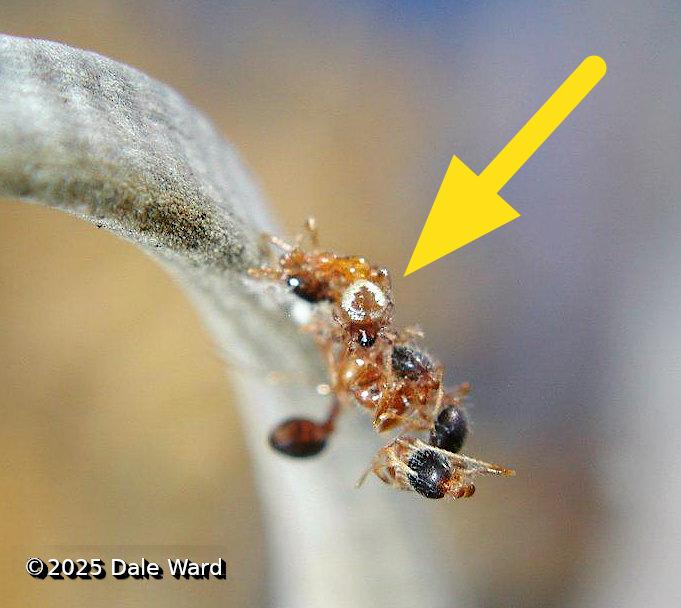 Crop f previous photo, and with a yellow arrow marking the Euryopis.
Crop f previous photo, and with a yellow arrow marking the Euryopis.
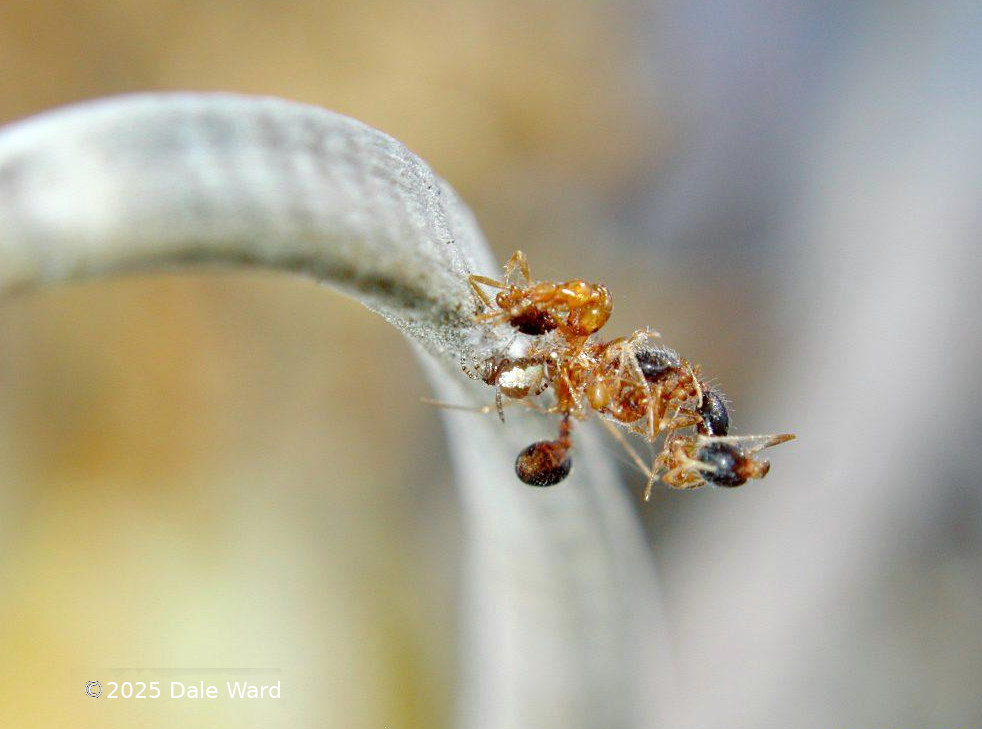 The _Euryopis_ crawling off of the cluster of _Solenopsis xyloni_.
The _Euryopis_ crawling off of the cluster of _Solenopsis xyloni_.
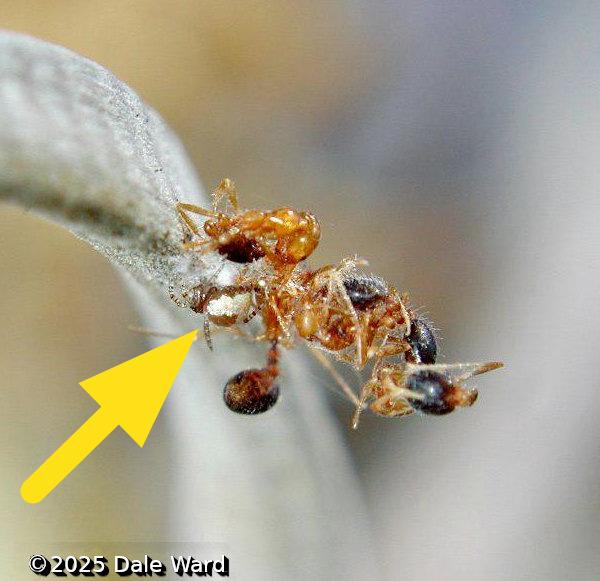 Previous photo, with yellow arrow marking Euryopis spider.
Previous photo, with yellow arrow marking Euryopis spider.
 _Euryopis_ on the cactus spine. It stayed here for as long as a watched it - a couple of minutes, probably. Note the head of the upper _Solenopsis_ - it appears to just be exoskeleton, no contents.
_Euryopis_ on the cactus spine. It stayed here for as long as a watched it - a couple of minutes, probably. Note the head of the upper _Solenopsis_ - it appears to just be exoskeleton, no contents.
I didn’t actually see the spider catch a Solenopsis, and I didn’t see the spider feeding on the ants. So I’m assuming that it was the one that had killed the ants. But I think that’s a reasonable assumption.
I think the spider was waiting for another ant to come along. When one did, it would catch the ant and add it to the bundle of dead ants. That would explain the number of clusters of dead Solenopsis - they were at locations where a spider had previously been hunting.
I only saw this one spider, but the number of dead ant bundles makes me wonder if there was more than one spider present.
Was this a different species of Euryopis than the ones I had seen eating Veromessor the previous year? Or was this an immature specimen of the same species?
This would be interesting in light of the aggregations that the adult spiders seem to form at ant nests. Do the spiders move in a loose group, a cohort, as they grow? That might explain how they are able to aggregate at ant nests when they are adults - they would have been associated throughout their lives.
Lots of suppositions, lots of wild speculation. But it’s fun to think about.
Addendum: I recently found some old photos of an anting trip I took to the Loma Trail (near Tucson, AZ) on April 6, 2003. I was watching Solenopsis (aurea? amblychila?) at Barrel Cactus extrafloral nectaries.
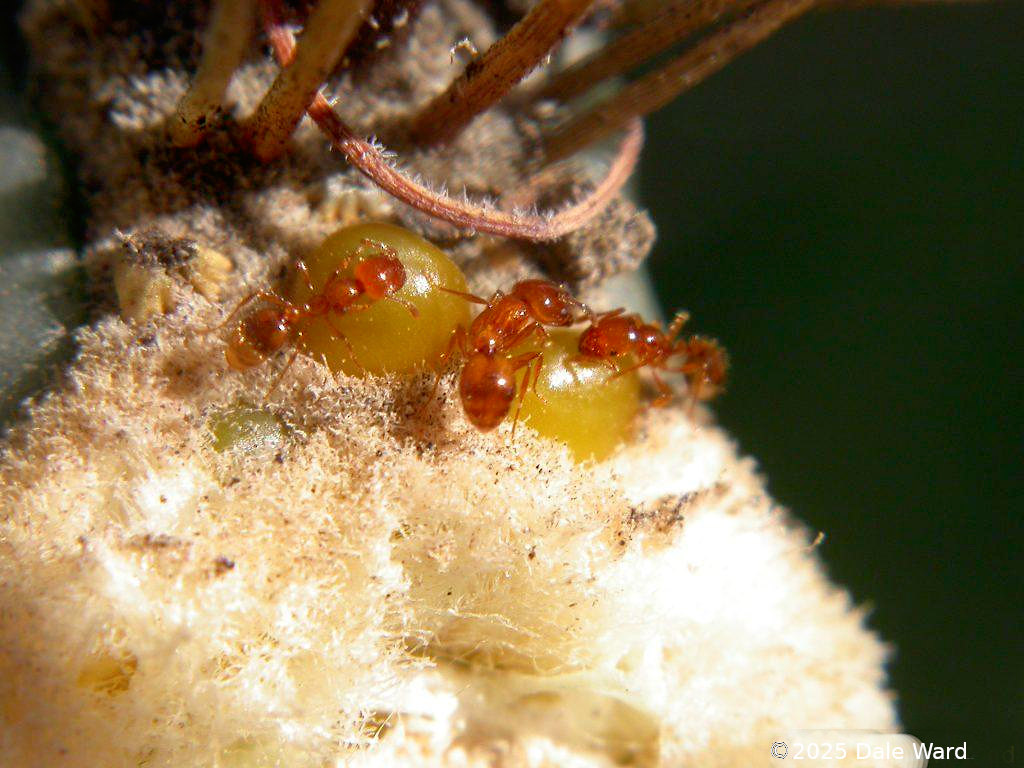 _Solenopsis (aurea? amblychila?)_ at Barrel Cactus extrafloral nectaries
_Solenopsis (aurea? amblychila?)_ at Barrel Cactus extrafloral nectaries
I saw the similar clusterings of web-entangled Solenopsis:
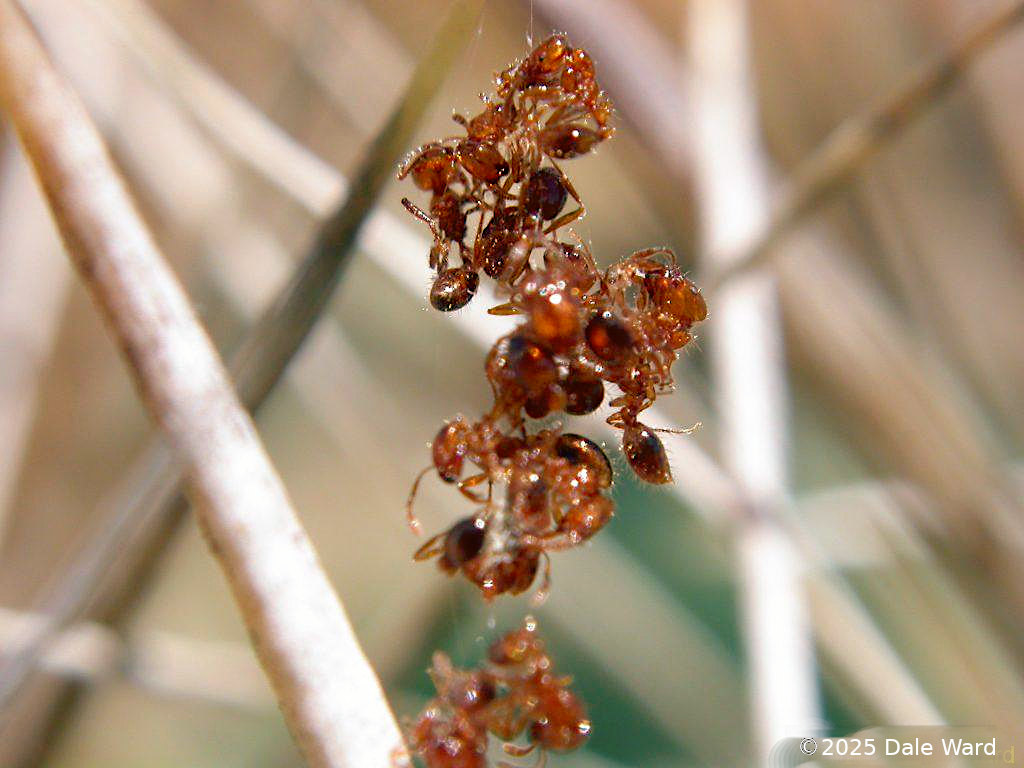 Web-entangled _Solenopsis_ corpses on Barrel Cactus spine
Web-entangled _Solenopsis_ corpses on Barrel Cactus spine
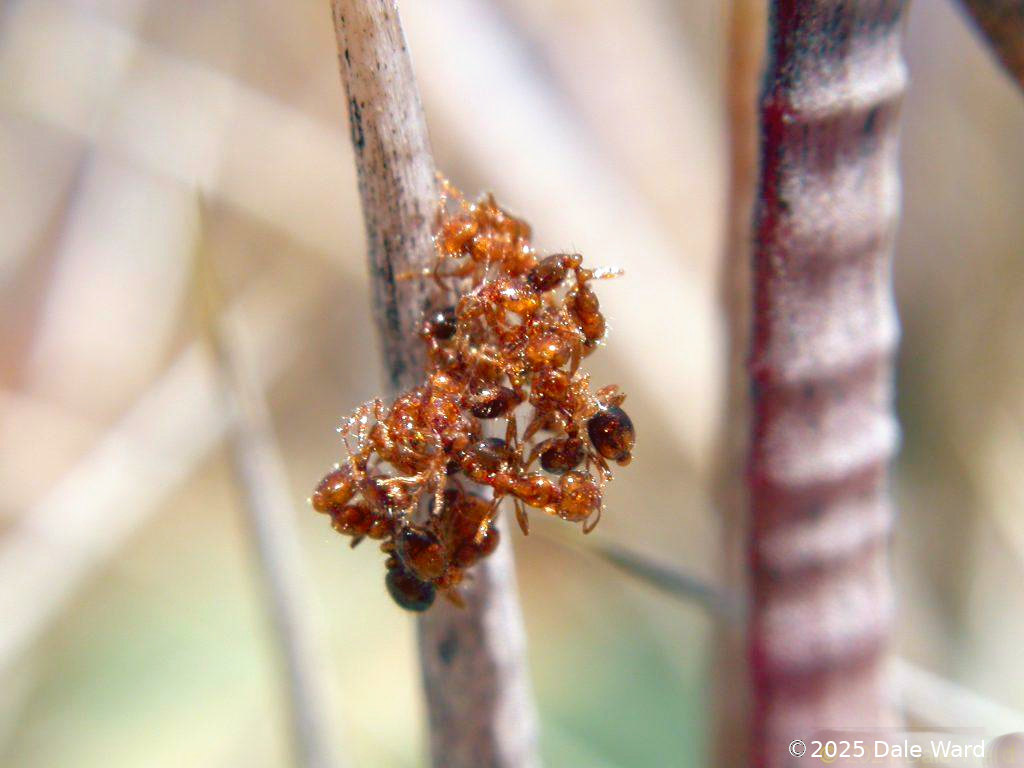 Web-entangled _Solenopsis (amblychila? aurea?)_ corpses on Barrel Cactus spine
Web-entangled _Solenopsis (amblychila? aurea?)_ corpses on Barrel Cactus spine
I didn’t find the spider(s) on this particular trip. It’s interesting nonetheless.
-
I strongly suspect this was Euryopis again, based on the ‘chain’ of ant corpses.
-
The time of year is Spring, again.
-
It’s also on a Barrel Cactus with active extrafloral nectaries.
I really need to find out more about these spiders.